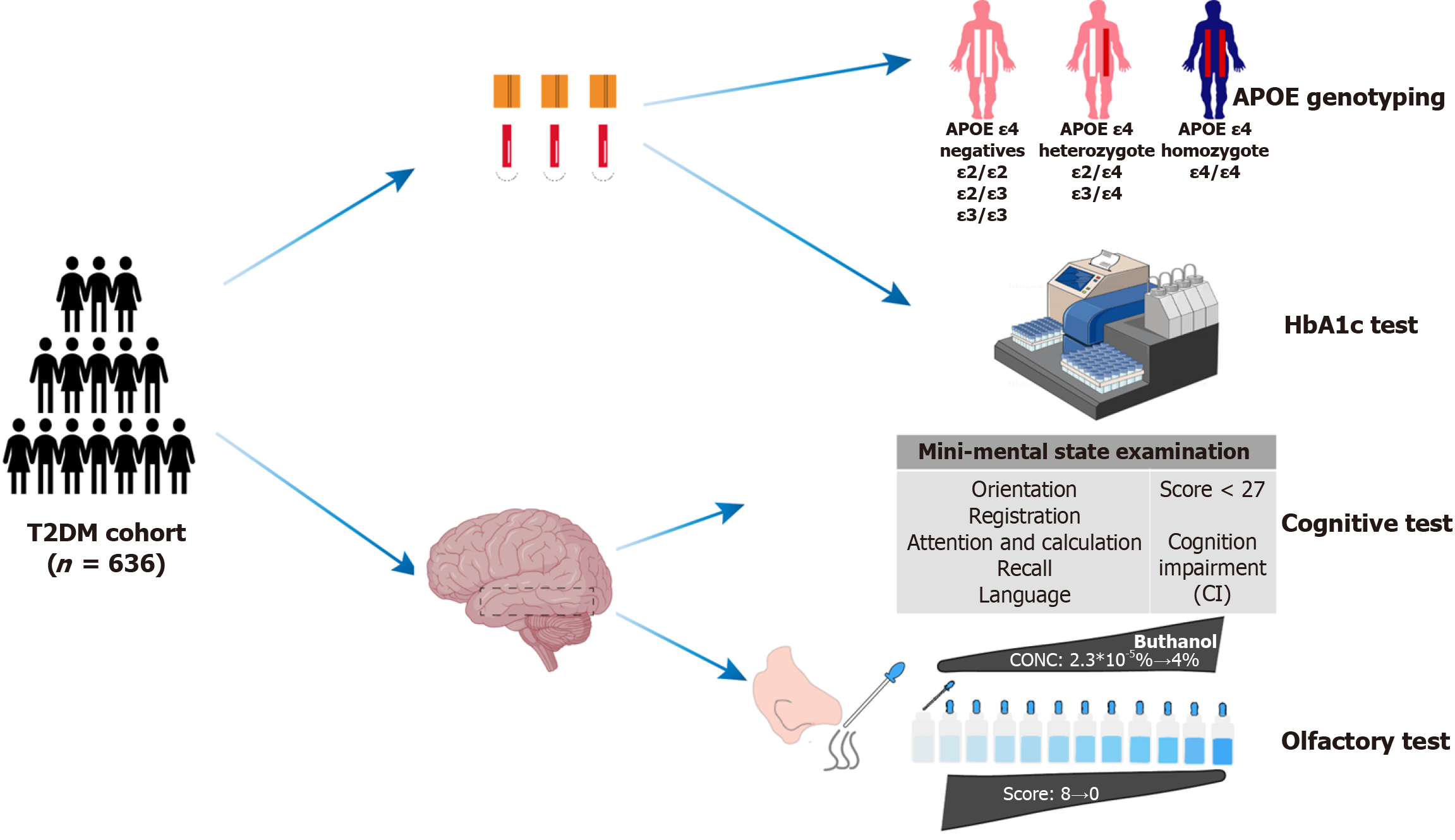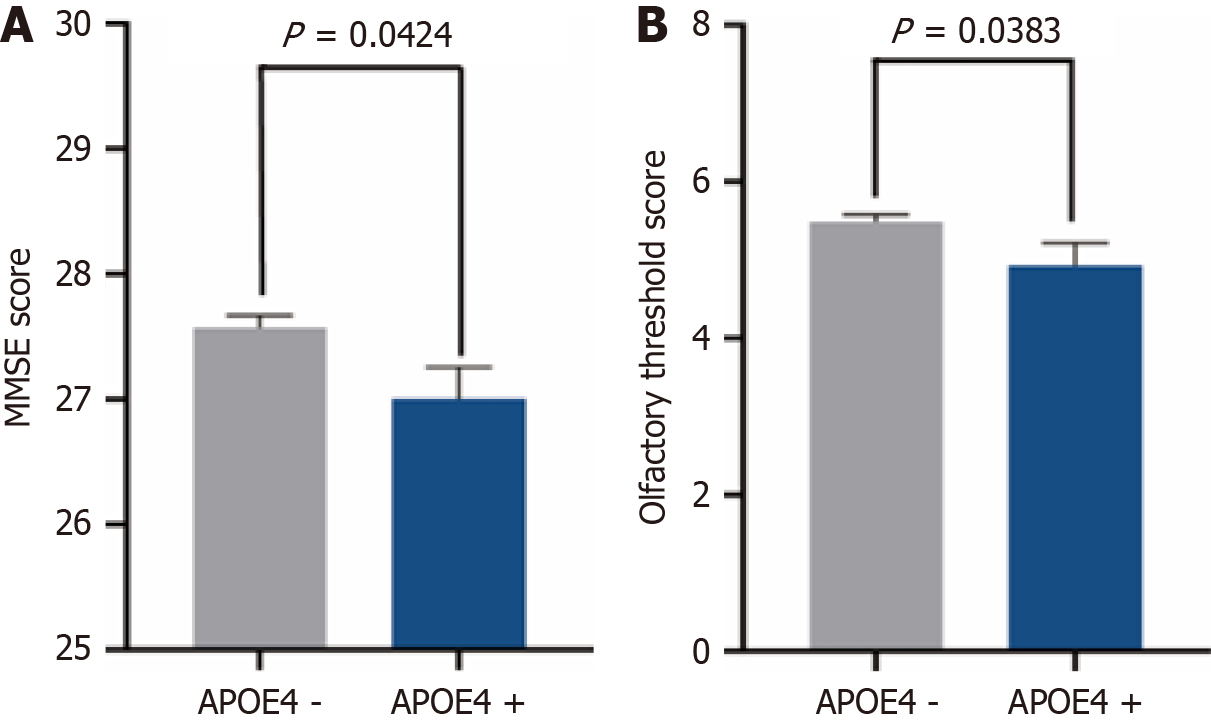Copyright
©The Author(s) 2025.
World J Diabetes. Aug 15, 2025; 16(8): 106664
Published online Aug 15, 2025. doi: 10.4239/wjd.v16.i8.106664
Published online Aug 15, 2025. doi: 10.4239/wjd.v16.i8.106664
Figure 1 Study profile.
Apolipoprotein E genotype and glycated hemoglobin level in peripheral blood samples were assessed from 636 patients with type 2 diabetes mellitus. Cognitive and olfactory functions, primarily mediated by the temporal lobe (dashed-line box), were evaluated using the mini-mental state examination and the Connecticut chemosensory clinical research center test, respectively. T2DM: Type 2 diabetes mellitus; HbA1c: Glycated hemoglobin; APOE: Apolipoprotein E.
Figure 2 Effects of apolipoprotein E epsilon 4 genotype on cognitive and olfactory function.
A: Apolipoprotein E epsilon 4 (APOE4) carriers had significantly lower mini-mental state examination scores compared to non-APOE4 carriers (P = 0.0424); B: APOE4 carriers had significantly lower olfactory threshold scores compared to non-APOE4 carriers (P = 0.0383). APOE4 - represents non-APOE4 carriers, APOE4 + represents APOE4 carriers. APOE4: Apolipoprotein E epsilon 4; MMSE: Mini-mental state examination.
Figure 3 Effects of apolipoprotein E epsilon 4 genotype and glycated hemoglobin level on cognitive and olfactory function.
A: Mini-mental state examination scores were significantly lower in the apolipoprotein E epsilon 4 (APOE4) + with high glycated hemoglobin (HbA1c) group compared to the APOE4 - with high HbA1c group (P = 0.0277); B: Olfactory threshold score was significantly lower in the APOE4 + with high HbA1c group compared to the APOE4 - with high HbA1c group (P = 0.017). HbA1c: Glycated hemoglobin; APOE4: Apolipoprotein E epsilon 4; MMSE: Mini-mental state examination.
- Citation: Wang YR, Gao Y, Liu YC, Xu ZP, Wang YY, Xu HB, Wang JZ, Zhang Y. Higher glycated hemoglobin amplifies the effect of apolipoprotein E epsilon 4-related cognition and olfaction impairments in type 2 diabetes. World J Diabetes 2025; 16(8): 106664
- URL: https://www.wjgnet.com/1948-9358/full/v16/i8/106664.htm
- DOI: https://dx.doi.org/10.4239/wjd.v16.i8.106664











